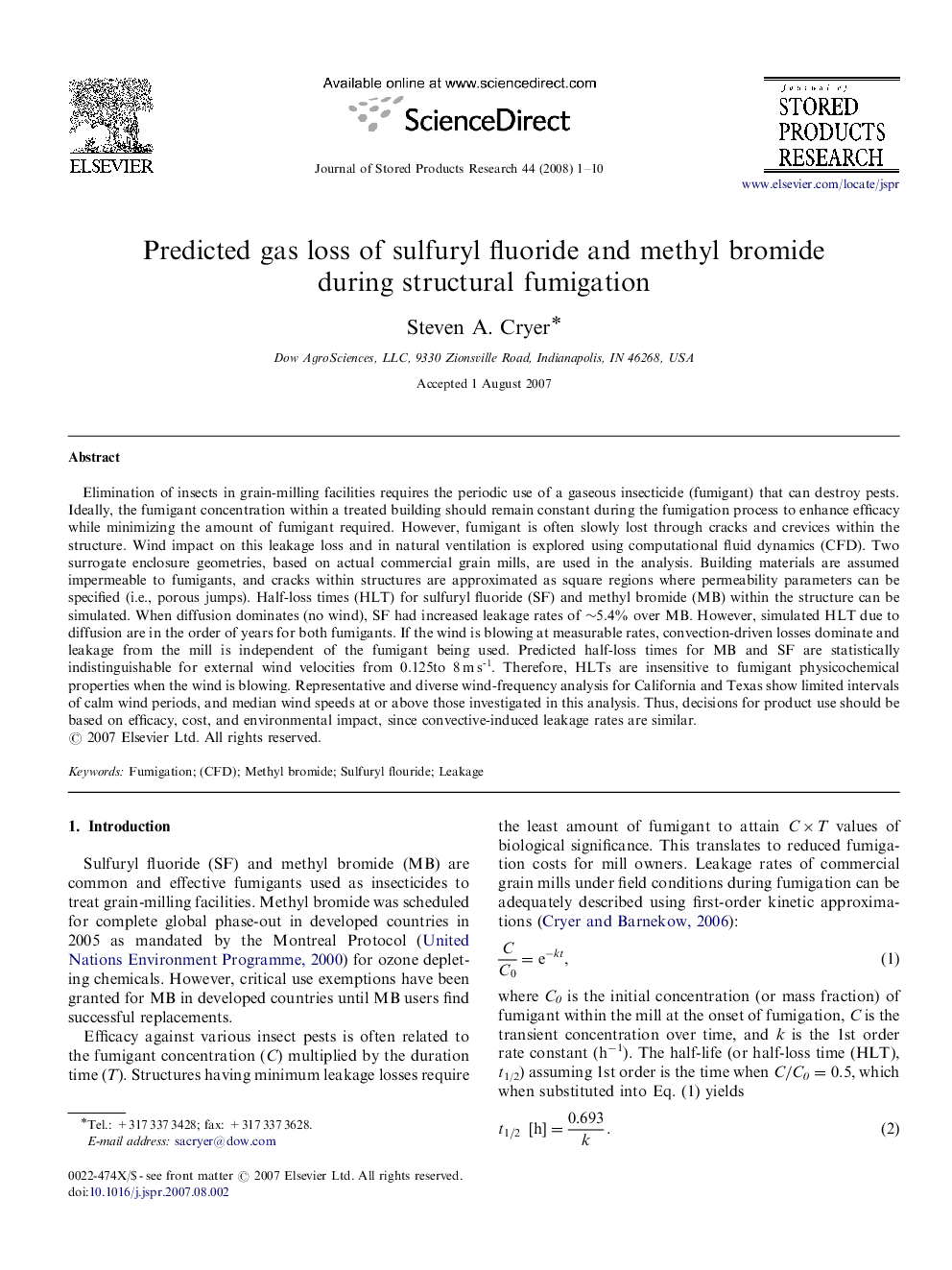| Article ID | Journal | Published Year | Pages | File Type |
|---|---|---|---|---|
| 4517512 | Journal of Stored Products Research | 2008 | 10 Pages |
Elimination of insects in grain-milling facilities requires the periodic use of a gaseous insecticide (fumigant) that can destroy pests. Ideally, the fumigant concentration within a treated building should remain constant during the fumigation process to enhance efficacy while minimizing the amount of fumigant required. However, fumigant is often slowly lost through cracks and crevices within the structure. Wind impact on this leakage loss and in natural ventilation is explored using computational fluid dynamics (CFD). Two surrogate enclosure geometries, based on actual commercial grain mills, are used in the analysis. Building materials are assumed impermeable to fumigants, and cracks within structures are approximated as square regions where permeability parameters can be specified (i.e., porous jumps). Half-loss times (HLT) for sulfuryl fluoride (SF) and methyl bromide (MB) within the structure can be simulated. When diffusion dominates (no wind), SF had increased leakage rates of ∼5.4% over MB. However, simulated HLT due to diffusion are in the order of years for both fumigants. If the wind is blowing at measurable rates, convection-driven losses dominate and leakage from the mill is independent of the fumigant being used. Predicted half-loss times for MB and SF are statistically indistinguishable for external wind velocities from 0.125to 8 m s-1. Therefore, HLTs are insensitive to fumigant physicochemical properties when the wind is blowing. Representative and diverse wind-frequency analysis for California and Texas show limited intervals of calm wind periods, and median wind speeds at or above those investigated in this analysis. Thus, decisions for product use should be based on efficacy, cost, and environmental impact, since convective-induced leakage rates are similar.
